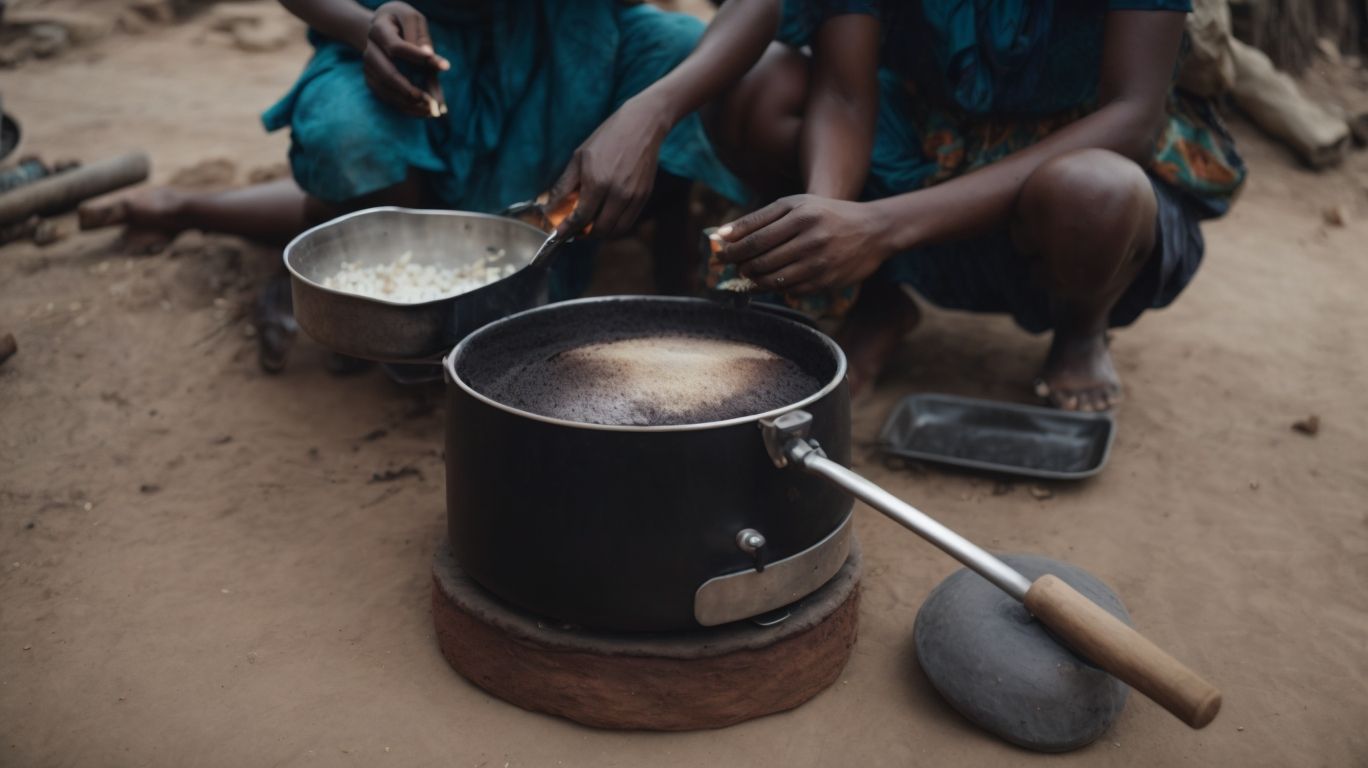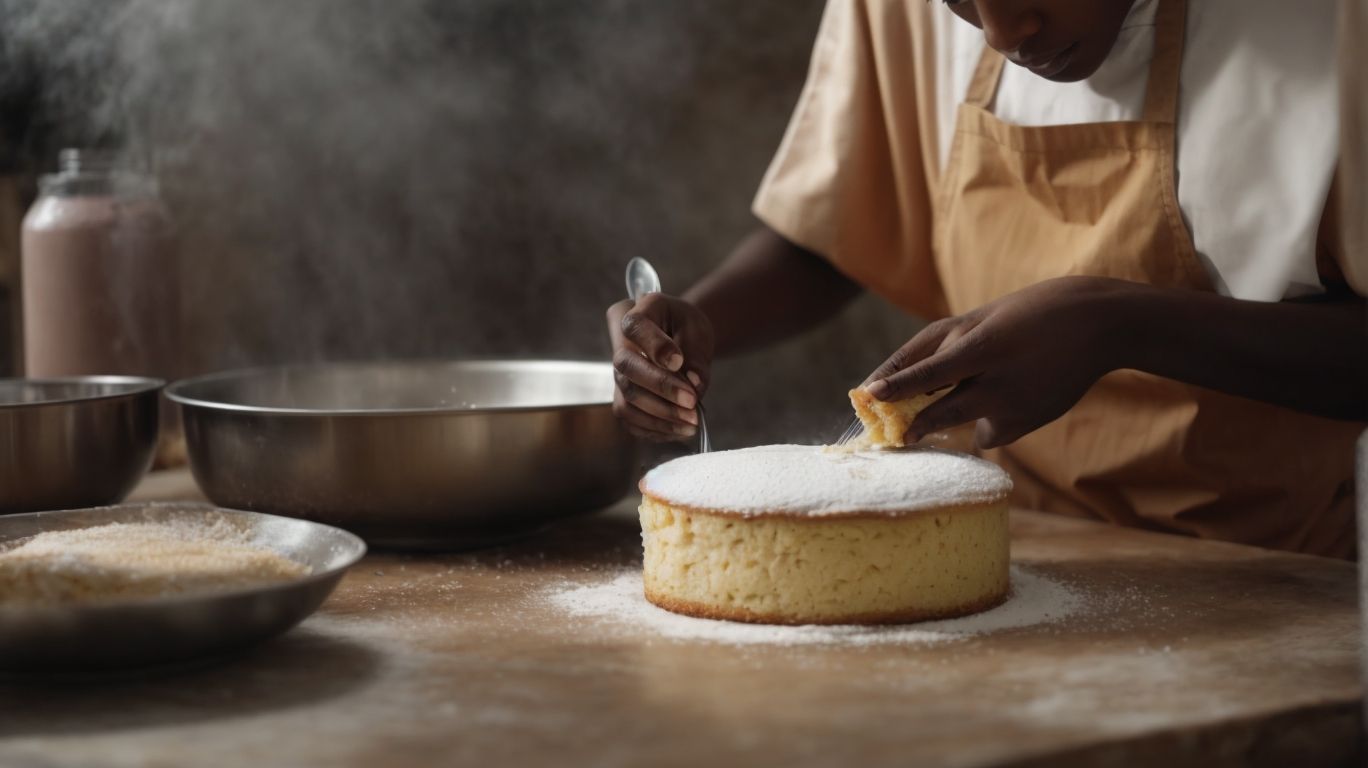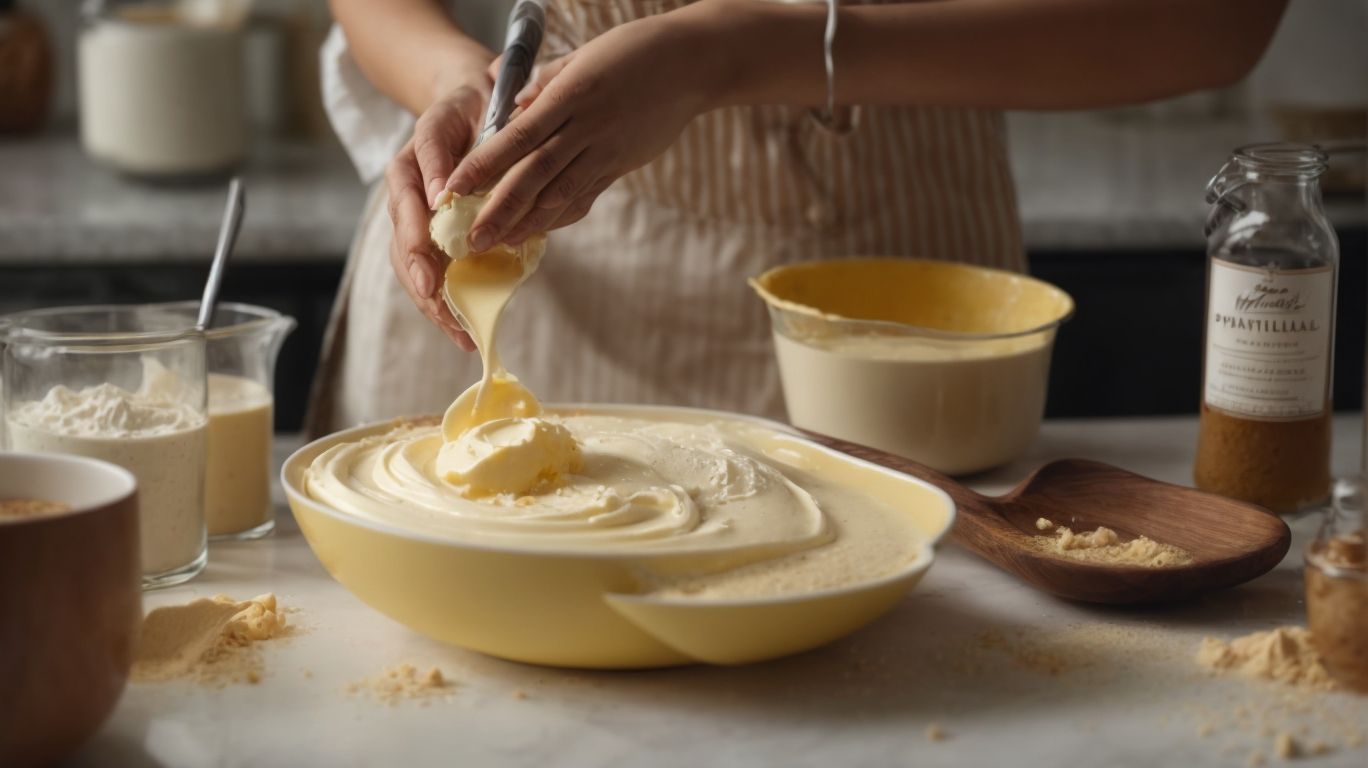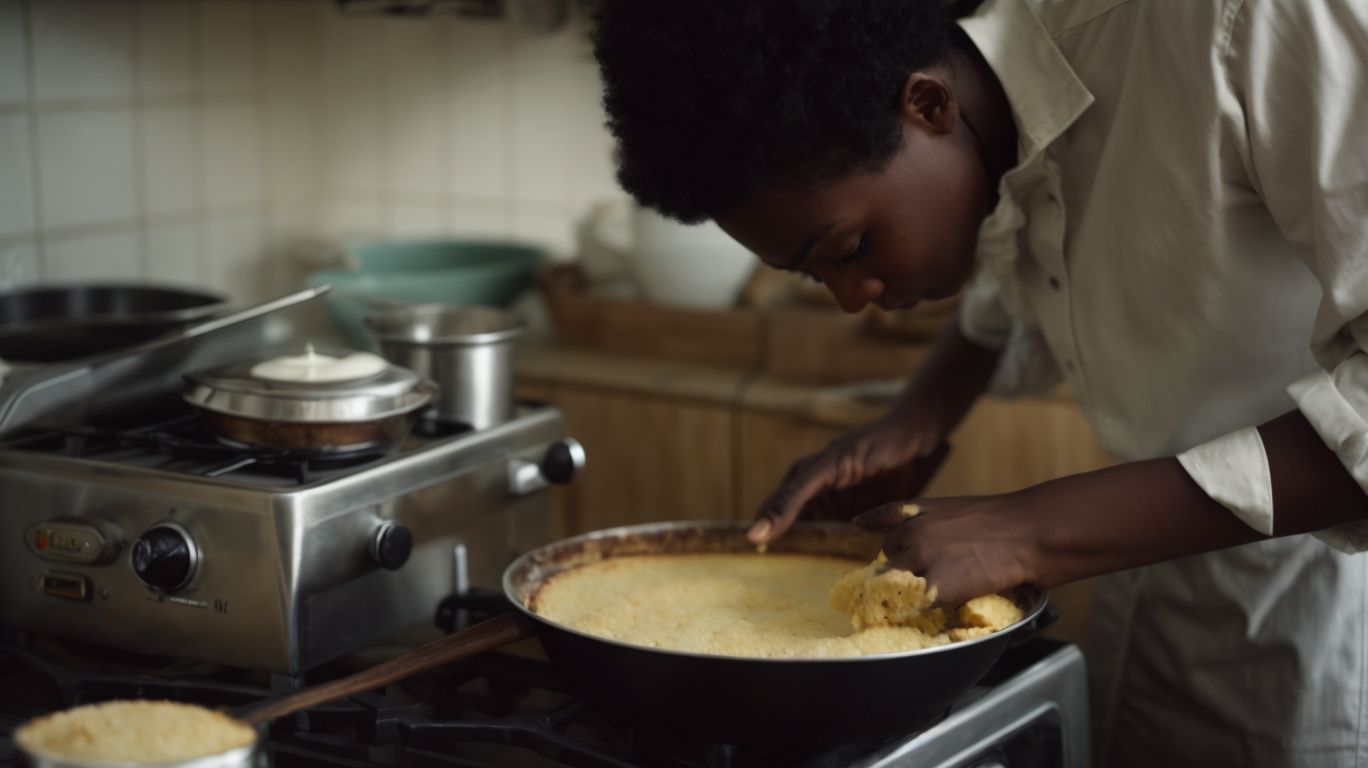How to Bake Cake Without Oven in Nigeria?
Are you ready to learn how to bake a delicious cake without an oven?
We explore the benefits of baking without an oven, the different methods you can use, and the essential tools and ingredients you’ll need.
Get a step-by-step guide on how to bake a cake without an oven in Nigeria, along with tips and tricks for achieving the perfect bake.
Indulge your sweet tooth with our mouthwatering recipe!
Key Takeaways:
What Are the Benefits of Baking Without an Oven?
Baking without an oven offers convenience and flexibility, allowing individuals to create delicious treats without the need for traditional baking equipment.
One major advantage of baking without an oven is the portability it offers. This means you can bake almost anywhere, whether you’re at a campsite or in a dorm room without access to an oven. This flexibility also extends to energy efficiency, as alternative baking methods such as stovetop baking or using a microwave consume less energy compared to heating up a whole oven.
Baking without an oven opens up a whole new world of unique recipes that cater to different tastes and preferences. With the right kitchen equipment like a Dutch oven or a countertop convection oven, you can experiment with various baking techniques and create impressive dishes.
What Are the Different Methods of Baking Without an Oven?

Credits: Poormet.Com – Gary Martinez
There are various methods to bake without an oven, including stove-top baking, pressure cooker baking, and microwave baking, each offering unique advantages and techniques.
Stove-top baking involves using a heavy-bottomed pan or skillet on the stovetop to simulate oven conditions. With this method, you can bake cakes, bread, and even pizzas on the hob. It’s essential to preheat the pan well and monitor the heat to ensure even cooking.
Pressure cooker baking leverages the steam pressure inside the cooker to bake items like puddings, cakes, and steamed bread. The closed environment in a pressure cooker helps in retaining moisture, resulting in moist and soft baked goods.
Microwave baking, on the other hand, is quick and efficient, ideal for smaller batches of treats like mug cakes, brownies, and cookies. Quick bursts of high heat are used in a microwave to bake items in minutes.
Using a Stove
Baking with a stove involves utilizing basic kitchen tools like an aluminium pot and regulating heat settings to achieve optimal baking conditions.
One of the key steps in baking with a stove is preheating the oven to the appropriate temperature. This is essential to ensure that your baked goods cook evenly and thoroughly. You’ll need to carefully monitor the heat throughout the baking process by adjusting the stove’s dials as needed to maintain a consistent temperature.
- When selecting the aluminium pot for baking, make sure it is oven-safe and of an appropriate size for your recipe. A well-fitting lid is also crucial to trap steam and heat, facilitating even baking.
- To enhance the flavors and textures of your baked goods, consider experimenting with different baking techniques such as roasting, broiling, or even using a water bath method for delicate desserts.
Using a Pressure Cooker
Baking in a pressure cooker requires proper preparation using a baking pan lined with foil paper to facilitate steam baking and ensure even heat distribution.
Preheating the pressure cooker to the desired temperature before placing the baking pan inside is crucial for successful baking results. The foil paper lining helps in creating a barrier between the intense heat of the pressure cooker and the batter or dough, preventing potential burning or unevenly baked areas.
Steam baking in a pressure cooker involves adding water to the cooker before placing the filled baking pan on a trivet inside. This steam aids in regulating the temperature inside the cooker and promoting a moist baking environment, ideal for certain recipes.
Using a Microwave
Microwave baking offers a rapid and convenient way to prepare cakes using microwave-safe containers, ensuring quick and efficient baking of cake batter.
When engaging in microwave baking, it is crucial to select the right kind of container that can withstand the heat generated by the microwave without leaching harmful chemicals into your cake batter. Always opt for containers labeled as microwave-safe or made of materials like glass, ceramic, or certain types of plastic deemed suitable for microwave use.
One of the most appealing aspects of microwave baking is its speed. Unlike traditional oven baking, microwave baking significantly cuts down on cooking time, allowing you to satisfy your sweet cravings in a fraction of the time with equally delicious results.
What Are the Essential Tools and Ingredients for Baking Without an Oven?
To bake without an oven, you will need essential tools such as a baking pan and parchment paper, along with key ingredients like flour, sugar, eggs, milk, baking powder, butter, and oil.
When baking without an oven, it’s crucial to have alternative equipment on hand. Electric griddle or stovetop are excellent substitutes for conventional ovens. A pressure cooker or slow cooker can work wonders for certain recipes. Other essential tools include mixing bowls, measuring cups and spoons, a whisk, spatula, and a baking rack. For instance, a cast iron skillet can double as a baking vessel. Don’t forget to have access to a stove or hotplate for heat source and a kitchen timer to track baking times.
Baking Pan
A baking pan serves as a versatile tool for baking, providing a suitable substitute for oven baking and enabling efficient cake preparation with non-stick surfaces.
Baking pans play a crucial role in ensuring that your cakes turn out just right, even if you don’t have an oven at your disposal. The non-stick properties of these pans make them easy to use and clean, preventing your cakes from sticking and ensuring an effortless baking experience. The versatility of baking pans allows for various baking methods such as convection baking or even air frying, providing you with options to experiment and bake your cakes to perfection.
Parchment Paper
Parchment paper is a crucial baking accessory that offers convenience, non-stick properties, and easy cleanup when baking without an oven.
When baking without an oven, parchment paper plays a vital role in ensuring that your baked goods come out perfectly without sticking to the pan. It acts as a barrier between the dough and the baking surface, preventing any potential sticking mishaps. The non-stick properties of parchment paper eliminate the need for greasing pans, saving you time and effort.
The easy cleanup process involves simply lifting the parchment paper with the baked goods off the pan, leaving you with little to no mess to scrub off. This makes post-baking cleanup hassle-free and quick, allowing you to enjoy your freshly baked treats sooner.
Flour
Flour is a fundamental ingredient in cake recipes, serving as a baking essential that provides structure and texture to baked goods, especially when using wheat flour variants.
Wheat flour, the most common type of flour used in baking, contains gluten, a protein that gives elasticity and strength to dough. This protein is vital in cake-making, as it allows the cake to rise and maintain its shape during baking. The quality of flour can significantly impact the final texture and crumb of the cake. Different types of wheat flour, such as all-purpose, cake flour, and bread flour, have varying protein content levels, affecting the tenderness and structure of the cake.
Sugar
Sugar acts as a primary sweetener and essential baking ingredient that contributes to flavor development, texture enhancement, and caramelization in baked goods.
Regarding baking, sugar plays a crucial role beyond just adding sweetness to your treats. It helps create the desired texture in cakes, cookies, and pastries, contributing to their tenderness and moistness. Sugar acts as a flavor enhancer, bringing out the taste of other ingredients in your recipe. Sugar aids in the caramelization process, giving your baked goods that golden-brown color and delightful aroma.
Baking Powder
Baking powder serves as a leavening agent that aids in cake rising and texture development, typically containing sodium bicarbonate for chemical reactions.
When combined with liquid and an acidic ingredient, such as buttermilk or yogurt, baking powder sets off a chemical reaction that produces carbon dioxide gas bubbles. These bubbles get trapped in the batter, causing it to expand and rise, giving your cakes that airy and light texture we all love.
It’s important to note that baking powder is double-acting, meaning it has two stages of leavening. The first reaction occurs when mixed with wet ingredients, and the second takes place when exposed to heat in the oven, ensuring a good rise throughout the baking process.
Eggs
Eggs are crucial in cake batter preparation, serving as binding agents that provide moisture, structure, and act as a protein source for baked goods.
When you crack open an egg, you unleash a powerhouse of culinary magic. The protein in eggs not only lends structure to your cakes but also helps them rise beautifully during baking. Eggs also play a key role in retaining moisture, ensuring your cakes are wonderfully moist and flavorful. Their binding properties bring all the ingredients together harmoniously, resulting in a smooth batter that bakes into a perfect cake. It’s remarkable how such a simple ingredient can make such a big impact on the final product.
Milk
Milk is a vital baking ingredient, serving as a liquid component that enhances texture, flavor, and moisture retention in recipes, especially as a dairy product.
Regarding baking, milk plays a crucial role in creating the perfect consistency and moisture levels in various recipes. Its richness adds depth to the flavor profiles of baked goods, while its protein content contributes to achieving the desired texture. Additionally, milk helps in creating a tender crumb in cakes and provides necessary hydration to doughs and batters.
As a dairy product, milk also adds a unique creaminess that cannot be replicated by other liquids. Its presence is often pivotal in achieving the right balance between moistness and structure in baked treats.
Oil
Oil serves as a crucial baking essential, acting as a source of fat that contributes to moisture retention, texture enhancement, and flavor development in baked goods.
Oil plays a vital role in determining the richness of baked treats. Its ability to coat flour particles prevents excessive gluten formation, resulting in tender products. The type of oil used can impact the overall flavor profile – from the subtle nuttiness of olive oil to the neutral taste of vegetable oil. Understanding how different oils behave in baking can help bakers tailor their recipes to achieve the desired taste and texture.
Step-by-Step Guide on How to Bake Cake Without an Oven in Nigeria

Credits: Poormet.Com – Ryan Scott
Mastering the art of baking a delectable cake without an oven in Nigeria involves a series of precise steps, from preparing the batter to achieving the perfect bake on the stove.
Once the batter is ready, it’s time to preheat a heavy-bottomed pot with sand or salt at the base for even heat distribution. This traditional technique mimics the baking environment of an oven. Next, place a wire rack or trivet inside to elevate the cake pan off the direct heat. Cover the pot with a tight-fitting lid, ensuring no steam can escape. Cook the cake on low heat, periodically checking for doneness with a toothpick. This method may take longer than oven baking but yields a scrumptious, moist cake distinctive to Nigerian culinary heritage.
Prepare the Baking Pan
Begin the baking process by preparing the baking pan, greasing it, lining with parchment paper, and ensuring it is ready to hold the cake batter for oven-free baking.
When preparing the baking pan, it is essential to choose the right size and shape based on the recipe requirements. A round pan is commonly used for regular cakes. Once you have the pan selected, generously grease the entire surface using butter or oil to prevent the cake from sticking.
- For extra assurance, you can dust the greased pan with flour,
- or cocoa powder for a chocolate cake, ensuring an easier release post-baking.
Next, carefully line the greased pan with parchment paper, ensuring its edges stick to the pan’s sides to prevent leakage and facilitate easy removal of the cake later.
Mix the Dry Ingredients
Combine the dry ingredients such as flour, sugar, and baking powder, sifting them together to form a homogeneous mixture for the cake batter.
Start by measuring out the required amounts of flour, sugar, and baking powder into a large mixing bowl. It’s crucial to sift these dry ingredients together to eliminate any lumps or clumps and ensure even distribution throughout the batter. The sifting process not only combines the ingredients but also aerates them, resulting in a lighter, more delicate crumb in the finished cake. Make sure to sift the mixture multiple times if needed to achieve a uniform texture and consistency before proceeding with the wet ingredients.
Add the Wet Ingredients
Integrate the wet ingredients like eggs, milk, oil, and vanilla into the dry mixture, creating a creamy, well-blended cake batter for stove-top baking.
Once you have combined the dry ingredients thoroughly in a mixing bowl, it’s time to incorporate the wet ingredients to bring the batter together. Crack the eggs into a separate bowl and whisk them lightly before adding them to the mix. Pour in the milk slowly, allowing it to moisten the dry ingredients without creating lumps. The oil should be drizzled in steadily while stirring continuously to ensure it emulsifies with the other components. Add a splash of vanilla extract to enhance the flavor profile of the batter.
Mix the Batter
Carefully mix the batter ingredients, ensuring a smooth and consistent texture by whisking or blending the components to achieve a uniform cake batter consistency.
Start by gathering all the necessary ingredients on your countertop for easy access. Measure out the flour, sugar, eggs, and any other components required for your cake recipe.
Next, in a large mixing bowl, combine the dry ingredients first- this includes flour, sugar, baking powder, and salt. Use a whisk to blend them together thoroughly, ensuring an even distribution of the powders.
After the dry ingredients are well-mixed, add in the wet ingredients such as eggs, milk, oil, or butter. Use a spatula to fold in the wet mixture gradually, incorporating it into the dry ingredients for a smooth batter.
Preheat the Stove or Pressure Cooker
Before baking, ensure to preheat the stove or pressure cooker to the required temperature, preparing the baking environment for optimal heat distribution and cake baking conditions.
Preheating is crucial as it allows the stove or pressure cooker to reach the desired temperature before you place the cake batter inside, ensuring even baking. For a stove, preheat it on low to medium flame for about 10-15 minutes; for a pressure cooker, remove the gasket and whistle, then heat on low flame for 5 minutes.
Temperature control is essential to prevent the cake from burning or undercooking, so always monitor and adjust the heat accordingly during the baking process.
Before preheating, prepare the baking tin by greasing it with butter and dusting it with flour to prevent the cake from sticking. This step is vital to ensure the cake comes out smoothly once baked.
By following these steps diligently, you can create a suitable environment for baking a delicious cake without an oven.
Bake the Cake
Place the cake batter in the prepared baking pan and commence baking on the stove or pressure cooker, monitoring the baking time and using a toothpick or skewer to check for doneness.
As the delightful aroma of the cake fills the air, keep a watchful eye on the clock to ensure you do not under or over-bake the cake. Depending on your chosen baking method, stove-top baking may require frequent turning to ensure even heat distribution, while pressure cooker baking offers a more enclosed environment for consistent temperature. The baking duration can vary based on the size and type of the cake, typically ranging from 30 minutes to an hour. To ascertain if the cake is ready, gently insert a toothpick or skewer into the center; if it comes out clean with no batter residue, your masterpiece is ready to be enjoyed!
Tips and Tricks for Perfectly Baked Cake Without an Oven

Credits: Poormet.Com – Zachary Torres
Enhance your oven-free baking skills with valuable tips and tricks to achieve perfectly baked cakes, utilizing innovative techniques and essential tools such as a cake rack for optimal results.
One key aspect to consider when baking without an oven is the use of alternative cooking methods, such as a pressure cooker or a stovetop. These methods can help replicate the baking environment and ensure even cooking. Additionally, proper temperature control is crucial when using these alternative methods, so investing in a good quality oven thermometer can make a significant difference in the outcome of your cakes. Another handy tool to have in your arsenal is a silicon cake mold, which helps in easy unmolding of cakes without sticking.
Conclusion
Mastering the art of baking cake without an oven in Nigeria offers a rewarding culinary experience, allowing you to create delectable treats using alternative baking techniques and enjoy the fruits of your baking endeavors.
Exploring the world of no-bake desserts or using a stovetop, pressure cooker, or even a microwave for baking can open up a whole new realm of possibilities in your culinary journey.
The joy of experimenting with ingredients, flavors, and textures to craft mouthwatering treats is truly unmatched. Whether it’s whipping up a classic chocolate cake or a unique indigenous delicacy, the satisfaction of creating something delicious from scratch is incomparable.
Frequently Asked Questions
How to Bake Cake Without Oven in Nigeria?
1. Can I bake a cake without an oven in Nigeria?
Yes, you can! There are alternative methods that can be used to bake a cake without an oven in Nigeria.
2. What are some alternative methods to baking a cake without an oven in Nigeria?
Some alternative methods include using a stovetop, a pressure cooker, or a microwave to bake a cake.
3. Do I need any special equipment to bake a cake without an oven in Nigeria?
No, you do not need any special equipment. You can use basic kitchen tools and utensils to bake a cake without an oven in Nigeria.
4. Are there any adjustments that need to be made when baking a cake without an oven in Nigeria?
Yes, adjustments may need to be made in terms of temperature and baking time depending on the method you choose. It’s important to follow a specific recipe for the method you are using.
5. Can I bake any type of cake without an oven in Nigeria?
Yes, you can bake a variety of cakes without an oven in Nigeria. However, some cakes may be better suited for certain methods than others.
6. Is it difficult to bake a cake without an oven in Nigeria?
It may require some practice and experimentation to master baking a cake without an oven in Nigeria. But with the right recipe and techniques, it can be done successfully.

